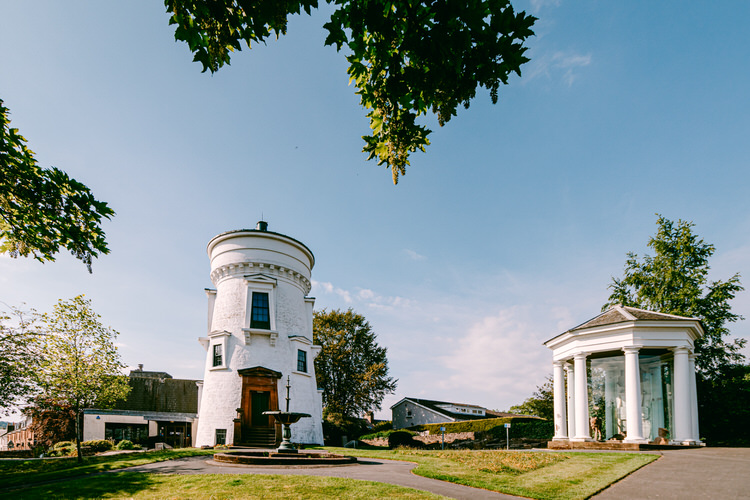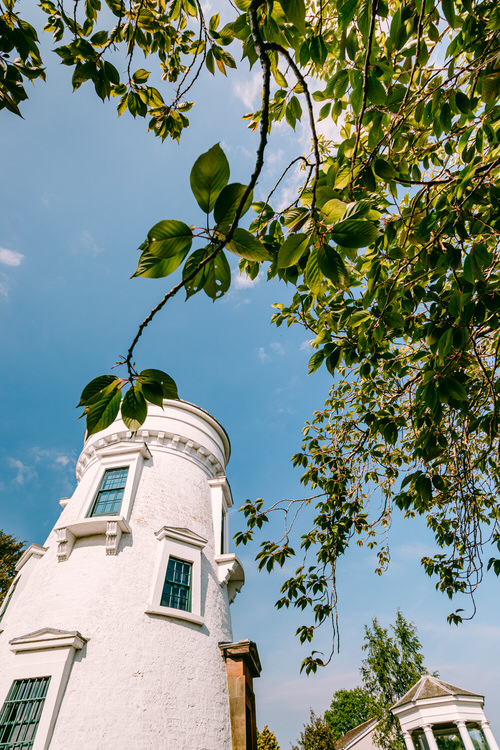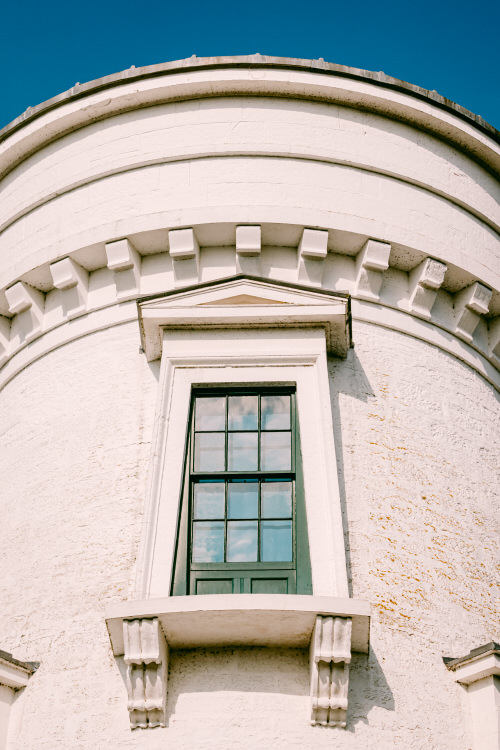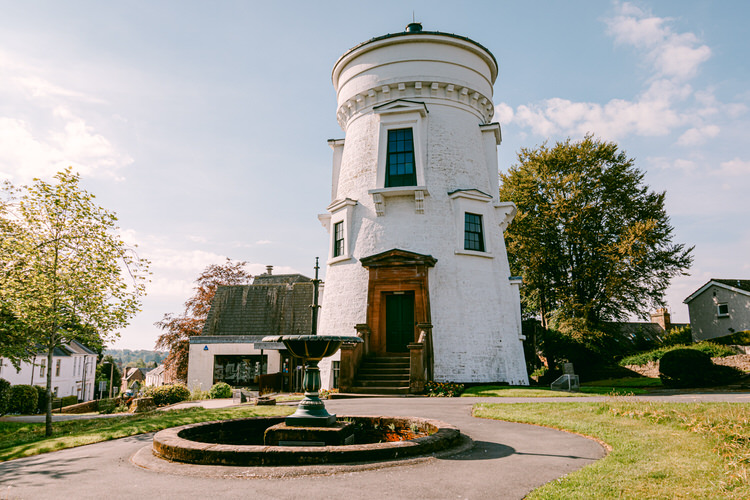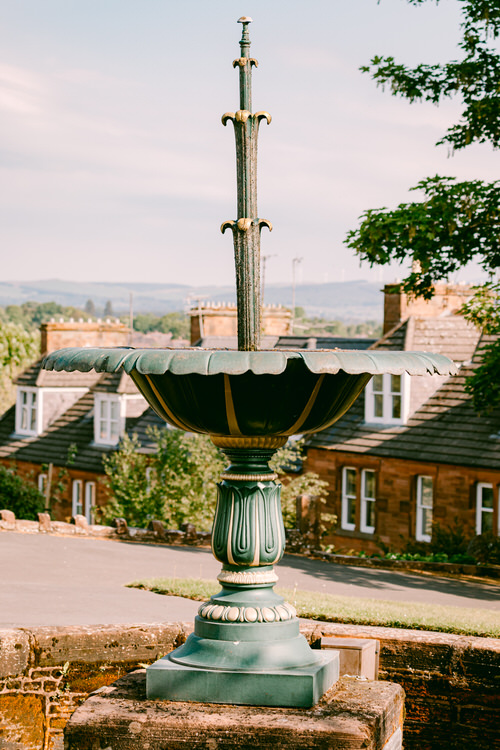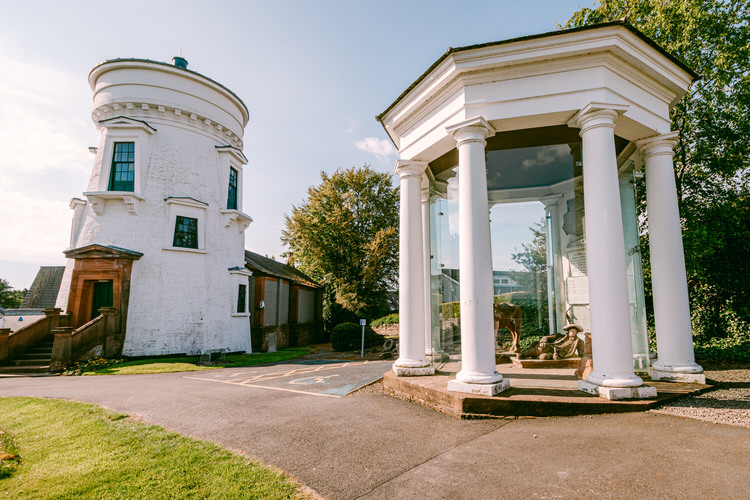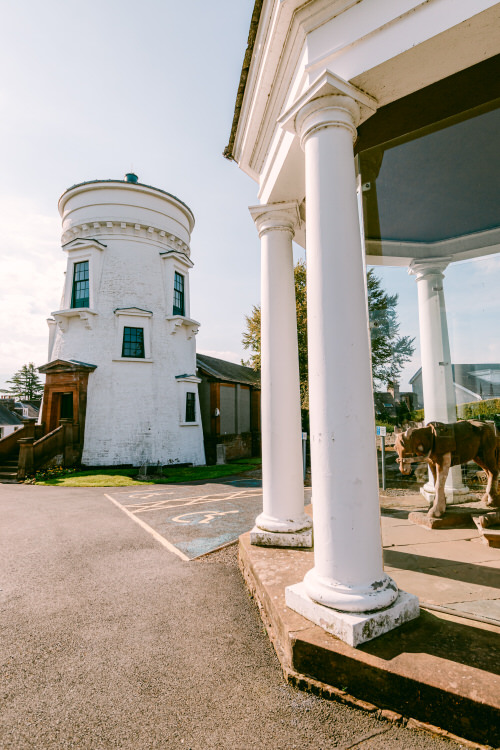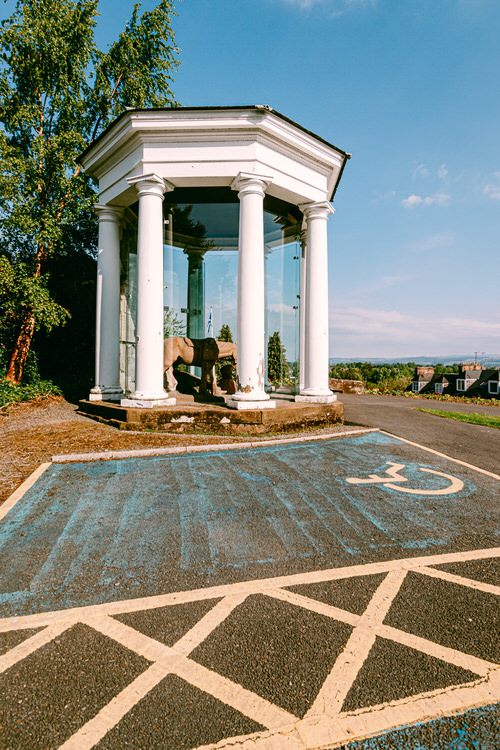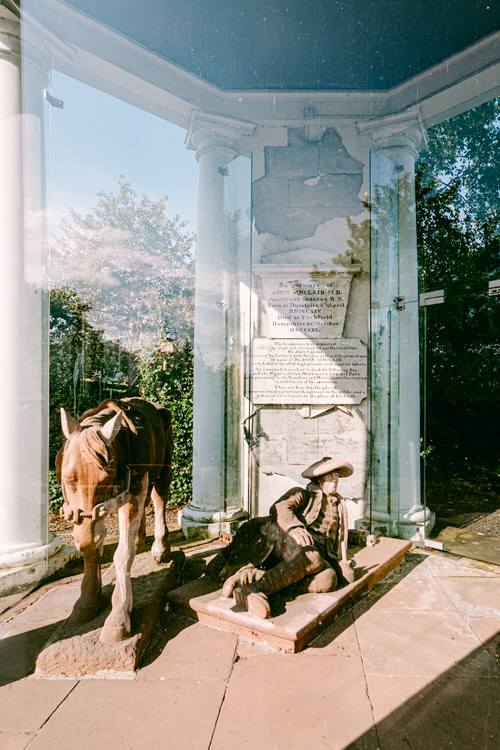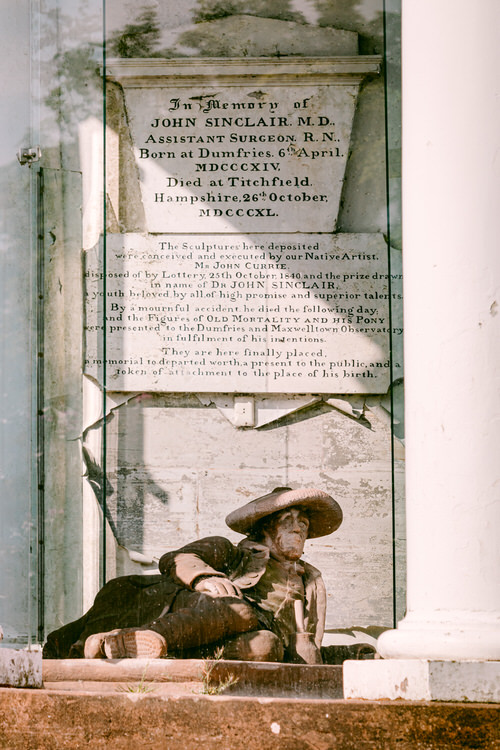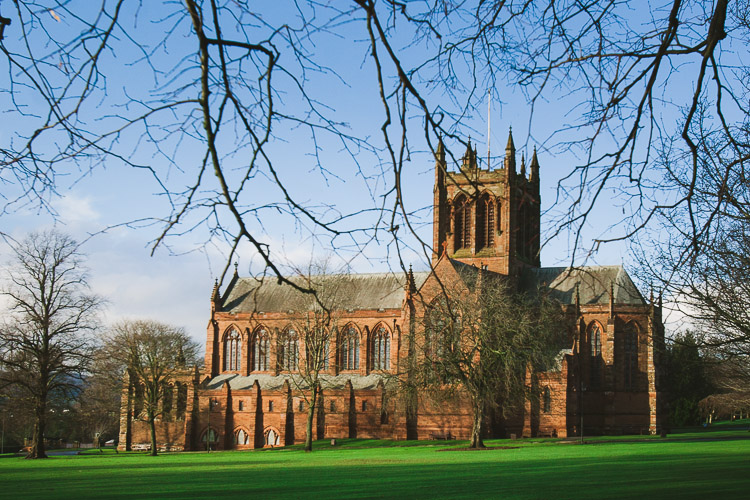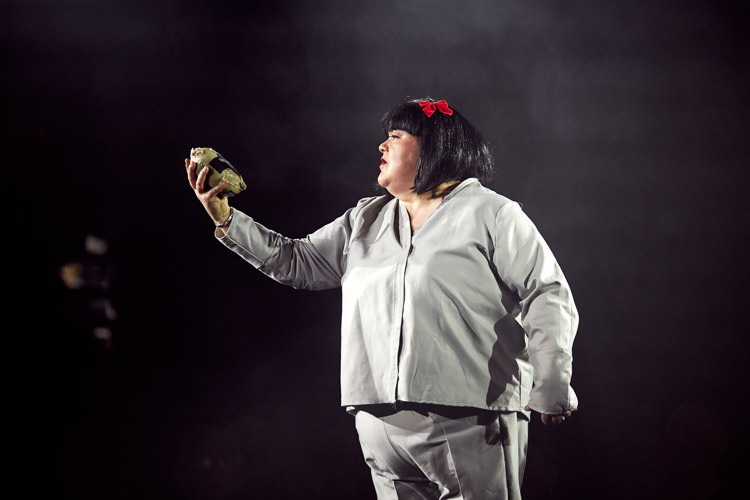Our previous visit to Dumfries Museum and Camera Obscura was in November, for the Records of War exhibition. We were mostly indoors and it was getting dark quickly, so I plotted to come back on a separate occasion, in a better light, to take photos of the museum grounds.
Well, I did it, but it took nearly a year, and the dreary isolation of the COVID-19 lockdown, to finally edit those images for my Dumfries Diaries. The experience made me think of Garry Winogrand who left some 2,500 exposed rolls of film still in their cartridges after his death. Duh…
I took a stroll around the charming four-story tower of the eighteenth century windmill that was converted in 1836 into an observatory for the Dumfries and Maxwelltown Astronomical Society. It’s topmost floor has the world’s oldest working camera obscura installed. The windows of the penultimate floor were enlarged and equipped with platforms to aim the telescopes at all directions.
A little fountain in front of the tower makes the central feature of a landscaped courtyard. On the right there is a very curious “three Johns” monument, the Sinclair Memorial. Built in 1841 by John Gregan, it is an octagonal Tuscan temple, housing a life size sculptural group of Old Mortality and his Pony by John Currie, local sculptor. One bay of the peristyle carries a commemorative plaque to Dr John Sinclair, assistant surgeon in the Royal Navy, in whose memory the whole thing was erected.
The story goes that on 25 October 1840 Sinclair won the statues of Old Mortality and his pony in a lottery, and then died the next day in a “mournful accident.” Somehow he managed to bequest the group to the Dumfries and Maxwelltown observatory in a very brief period between these two events. Well, I could believe that upon seeing his prize he wanted to dispose of it asap… “Hm, who would I give it to?”, he thought…
Anyway, the Sinclair Memorial lends an additional idiosyncratic charm to the museum, as well as the Russian cannon, captured during the Crimean War, that overlooks the town streets underneath.

